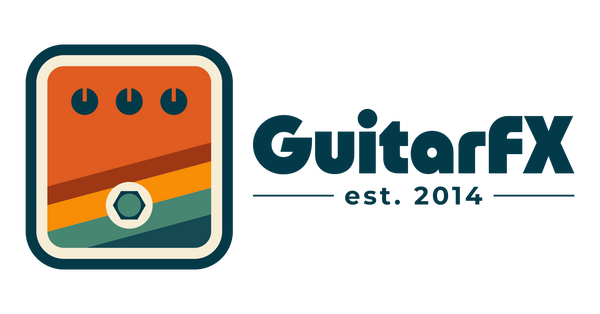What is a Wah Wah effect?
Share
Introduction
The wah wah pedal, iconic for its expressive, voice-like quality, has been a fundamental tool for guitarists across genres. This guide explores the world of wah wah pedals, detailing their history, functionality, and the various ways they can enhance guitar playing with their distinctive sound.
The Origin and Evolution of Wah Wah Pedals
The wah wah effect originated in the 1960s, inspired by the sound of a muted trumpet. The first wah pedal, created by Brad Plunkett at Warwick Electronics Inc./Thomas Organ Company, became popular through its use by guitarists like Jimi Hendrix and Eric Clapton. Over the years, wah pedals have evolved in design and functionality, with various models offering unique features and tonal characteristics.
Understanding Wah Wah Pedals
A wah wah pedal operates by sweeping a peaked frequency response up and down in frequency to create a 'wah' sound. This effect is controlled by a foot-operated treadle, similar to a gas pedal. Key components of a wah pedal include:
- The Treadle: Controls the sweep of the wah effect. Rocking the pedal forward increases the frequency, and rocking it back decreases it.
- The Wah Range: Determines the frequency spectrum over which the wah effect operates.
- Q Factor: Refers to the sharpness of the filter peak. A higher Q factor results in a more pronounced wah effect.
Types of Wah Wah Pedals
Wah pedals come in various forms, each offering a distinct flavor:
- Classic Wah Pedals: Offer the traditional wah sound as heard in many classic rock songs.
- Multi-Mode Wah Pedals: Include selectable modes or adjustable parameters for different wah sounds.
- Auto-Wah/Envelope Filter Pedals: Automatically sweep the wah effect based on the dynamics of your playing, without the need for a treadle.
Integrating a Wah Pedal into Your Setup
Placement of the wah pedal in your signal chain can significantly affect its performance. Typically, wah pedals are placed at the beginning of the chain, before distortion and modulation effects, to ensure a clean sweep of the frequency range. However, experimenting with different placements can lead to unique tonal variations.
The Interplay with Different Amplifiers and Guitars
Wah pedals interact distinctively with different types of amplifiers and guitars. Tube amplifiers, known for their responsiveness to dynamics, can complement the expressive nature of wah pedals. The type of guitar and pickups also affects the wah's response, with single-coils often yielding a sharper wah effect compared to the thicker wah sound from humbuckers.
Iconic Wah Wah Pedals and Their Famous Users
- Jimi Hendrix: One of the early adopters, Hendrix used the Vox Wah to create some of his most memorable solos and rhythm parts.
- Eric Clapton: Utilized the wah pedal during his time with Cream, adding expressiveness to his bluesy guitar playing.
- Slash (Guns N' Roses): Known for using the Dunlop Cry Baby wah to add emotion and expression to his solos.
Advanced Techniques: Exploring the Expressive Potential of Wah
Beyond basic wah effects, there are advanced techniques that can enhance your playing:
- Wah with Distortion: Combining wah with distortion pedals can lead to a more aggressive, cutting tone.
- Half-Cocked Wah: Leaving the wah pedal in a fixed position can create a unique filter effect, emphasizing certain frequencies.
- Wah as a Tone Control: Using the wah pedal to subtly shape your overall tone, rather than for the pronounced wah effect.
Choosing the Right Wah Pedal
Selecting the right wah pedal depends on your personal style, the genres you play, and the specific tones you're aiming to achieve. Consider the pedal's sweep range, the adjustability of its parameters, and whether you need a traditional or more versatile wah sound.
Conclusion
The wah wah pedal offers a unique way to add expressiveness and dynamic range to your guitar playing. Mastering its use can open up new dimensions in sound, from subtle tone shaping to dramatic, attention-grabbing effects.
FAQs
Q: How do I avoid excessive noise when using a wah pedal? A: To minimize noise, ensure your wah pedal is properly maintained and free from dust. Using high-quality cables and power supplies can also reduce noise.
Q: Can wah pedals be used effectively in genres other than rock? A: Yes, wah pedals are versatile and can be used in funk, jazz, and even in experimental music to add rhythmic dynamics and tonal variety.
Q: What's the difference between a standard wah and an auto-wah? A: A standard wah pedal is manually operated by the player using a treadle, offering direct control over the wah effect. An auto-wah, on the other hand, automatically adjusts the wah effect based on the input signal's dynamics and playing intensity.
